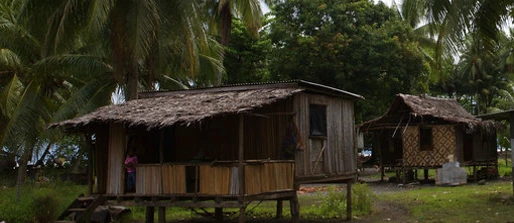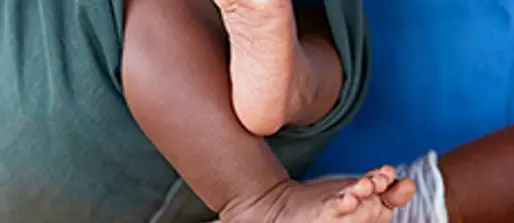


Malaria Immunity and Vaccines
Our research focuses on immunity, vaccines, new treatments and clinical studies of malaria.
Group Heads
About
Malaria is among the world’s leading health problems, particularly affecting young children and pregnant women. Additionally, malaria severely impedes education, equity and economic development. We aim to understand the targets and mechanisms of immunity to malaria and develop innovative vaccines that are highly protective against malaria.
Combating malaria is an explicit target in the UN Sustainable Development Goals. However, progress in reducing the global burden of malaria has stalled since 2015, with increases likely in the coming years. Plasmodium falciparum causes most clinical cases and deaths globally, with P. vivax the second major cause, particularly in the Asia and Pacific region.
Our broad objectives are to accelerate progress towards elimination of malaria through
- development of new highly protective and long-lasting vaccines
- developing and supporting the implementation of novel approaches for malaria surveillance to strengthen impact of interventions
- developing and evaluating new interventions in malaria-endemic populations.
We use cutting-edge approaches to understand:
- malaria immunity in vaccine trials and clinical studies
- the design of new vaccines that overcome existing roadblocks.
We work with large multicentre studies across malaria endemic regions, including analysis of malaria vaccine trials. To achieve our goals and maximise the impact of our work, we collaborate extensively nationally and internationally.

Listen to our podcast
Our group head, Professor James Beeson, discusses Burnet's malaria work in Episode 8 of our How Science Matters podcast.
Current projects
View 6 moreUnderstanding immunity mediated by the RTS,S malaria vaccine in children
We're researching the immune responses induced by the RTS,S vaccine where the burden of malaria is highest: among young children in multiple malaria-endemic African countries.
Interactions between COVID-19, malaria and other infections that impact vaccine immunity in Malawi
We're investigating immunity in cohorts of naturally infected and vaccinated individuals in Malawi.

Discovering the mechanisms and targets of immunity against malaria
In the fight against malaria, we're exploring antibodies that can directly inhibit host cell infection, interact with immune cells to kill and clear malaria or recruit the body’s complement system to neutralise infection.
Featured publications
Antibody mechanisms of protection against malaria in RTS,S-vaccinated children: a post-hoc serological analysis of phase 2 trial
The Lancet Microbe
Liriye Kurtovic et al
Mechanisms and targets of Fcγ-receptor mediated immunity to malaria sporozoites
Nature Communications
Gaoqian Feng et al
Mycoplasma genitalium in pregnancy, including specific co-infections, is associated with lower birthweight: A prospective cohort study
Med
Michelle J. L. Scoullar et al
Induction, decay, and determinants of functional antibodies following vaccination with the RTS,S malaria vaccine in young children
BMC Medicine
Gaoqian Feng et al
Targets of complement-fixing antibodies in protective immunity against malaria in children
Nature Communications
Linda Reiling et al
Human Antibodies Fix Complement to Inhibit Plasmodium falciparum Invasion of Erythrocytes and Are Associated with Protection against Malaria
Immunity
Michelle J. Boyle et al
Challenges and strategies for developing efficacious and long-lasting malaria vaccines
Science Translational Medicine
James G. Beeson et al
Protocols and methods
-
Complement-fixation by antibodies to Plasmodium falciparum
Development of methods to quantify antibody mediated complement fixation for malaria.
-
Quantifying antibody binding to Fcγ-receptors in malaria immunity
Laboratory methods for quantify Fc-receptor interactions by antibodies to malaria.
-
Isolation of viable Plasmodium falciparum merozoites
Laboratory methods to isolate merozoites.
-
Plasmodium falciparum Growth or Invasion Inhibition Assays
Laboratory methods to quantify the ability of antibodies to inhibit or neutralise P. falciparum.
-
Phagocytosis of antigen-coated beads or malaria parasites using neutrophils
Published protocol and method.
-
Antibody-dependent cell-mediated cytotoxicity (ADCC) assay with natural killer cells in malaria immunity
Published protocol and method.
Group contacts
Main contact

Professor James Beeson
Deputy Director, Research Strategy; Head, Malaria Immunity and Vaccines Group; Adjunct Professor, Monash University
Student supervisor contacts

Professor James Beeson
Deputy Director, Research Strategy; Head, Malaria Immunity and Vaccines Group; Adjunct Professor, Monash University
Group members

Dr Adam Thomas
Senior Research Officer - Malaria Vaccines

Alessia Hysa
PhD Student

Alexander Harris
PhD Student

Catherine Ives
PhD Candidate

Chiara Drago
Research Assistant

Grace Wright
Research Assistant

Dr Herbert Opi
Senior Research Fellow

Professor James Beeson
Deputy Director, Research Strategy; Head, Malaria Immunity and Vaccines Group; Adjunct Professor, Monash University

Jessica Horton
Honorary Associate

Jessie Lu-Lee
Project Manager

Jiaqi (Albert) Shi
Master's Student

Dr Jo-Anne Chan
Senior Postdoctoral Research Scientist

Kaitlin Pekin
PhD Student

Katie Stanhope
PhD Candidate
Burnet Institute

Dr Lee Yeoh
Postdoctoral Fellow

Dr Linda Reiling
Senior Research Officer, Malaria Research: Immunity, Vaccines and New Therapies

Dr Liriye Kurtovic
Postdoctoral Research Officer

Dr Michelle Scoullar
Senior Research Fellow - Women’s, Children’s and Adolescents’ Health. Paediatrician.

Dr Natasha Pereira
Quality Assurance Specialist

Dr Sandra Chishimba
Postdoctoral Researcher/Research Officer

Timothy Ho
PhD student








